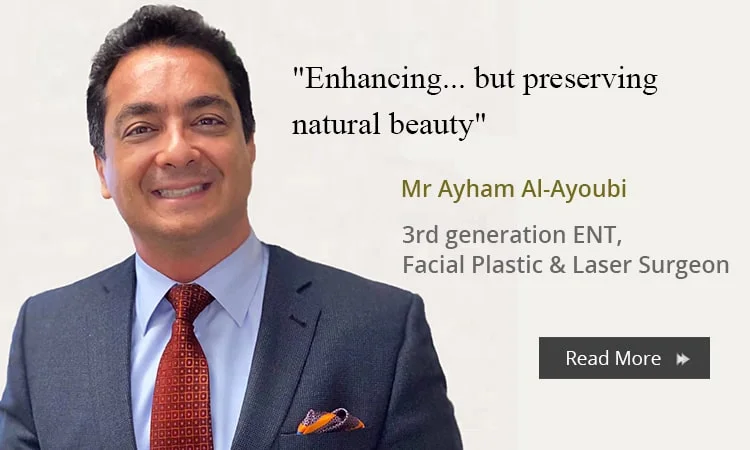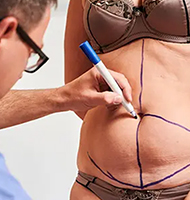We pride ourselves to be the one of the leading clinics in Hair Transplants in London for men and women, using the latest advanced, well-proven and safe techniques, including laser Hair Transplant treatment which is exclusive at our clinic in the UK.
Over the years many different hair transplant techniques have developed, nevertheless, the FUE method has revolutionised hair transplants and has become the Gold Standard technique for achieving the desired natural result.
FUE (Follicular Unit Extraction) – involves removing healthy hair follicles directly from a donor area on the scalp and grafting them onto the bald or thinning areas.
This treatment is minimally invasive and is done under local rather than general anaesthetic, eliminating risks and downtime associated with other hair transplant procedures. With the FUE transplant there is no cutting of strips, making very small entry points into the scalp the surgeon will ensure that the donor looks intact after the hair transplant procedure and the patient can keep the hair really short if preferred without any obvious scarring.
The benefits of FUE:
- Natural-looking results and dense packing
- A simpler, less painful and minimally invasive procedure
- No scalpels, stitches or linear scarring
- Use of only strong, healthy follicles
FUE Vs FUT Hair Transplant
In both FUE and FUT hair transplant techniques, healthy hair grafts are placed into tiny incisions in the areas of the scalp affected by hair loss. The surgeon must take great care to distribute and position the incisions to ensure they blend seamlessly with the patient’s existing hair. The surgical team uses very fine forceps or implanter devices to reimplant the grafts, and must pay careful attention to the storage and handling of the follicles in order to avoid damage and optimise graft survival.
Also common to both techniques is the source of these grafts. They are taken from ‘donor’ areas of the scalp, where hair is genetically programmed to continue growing for life.
The difference is in how these grafts are harvested.
FUT:
In the FUT procedure, a strip of hair-bearing skin is removed from the donor area of the scalp, usually the back of the head. This is why FUT is also known as ‘strip’ surgery.
The long-term donor hair supply will be influenced by how loose (or lax) the scalp skin is and by how many hairs there are per square centimetre of donor scalp. The strip is then placed under high-powered microscopes and the surgical team meticulously divides it into tiny grafts of individual follicular units comprised of one to four hairs. These grafts are placed in a chilled tissue storage solution until they are transplanted.
The donor area is stitched up and usually then covered by the surrounding hair. After between 10 and 14 days the stitches are removed and the donor area heals to form a linear scar.
FUE:
In the FUT procedure the donor area of the scalp is shaved and follicular unit grafts are excised individually, using a 0.8mm to 1mm ‘punch’.
The procedure can be carried out manually or using a motorised surgical tool.
Following FUE there will be a series of tiny dot scars on the scalp, but these are so small as to be scarcely noticeable. With multiple FUE procedures more dot scars are accumulated and the hair in the hair in the donor area is gradually thinned out. This is why there is a limited amount of donor hair, which means that surgeons and patients must take care to ensure that there is adequate donor supply for a long term plan.
Causes of Hair Loss
The effects of male hormones on genetically susceptible hair follicles cause androgenetic alopecia. Male hormones blamed to cause hair loss are also called androgens, hence the name “androgenetic alopecia”. There are three important factors involved in the hair loss process caused by androgenetic alopecia. These factors are closely related to each other.
Hair loss due to androgenetic alopecia occurs only if a person has a specific genetic code in his or her chromosomes. This code responsible for baldness is carried by a single gene or a group of genes and may be inherited from either mother or father.
A popular explanation for the inheritance of androgenetic alopecia is that a gene that is supplied by the mother and expressed in the sons who carry it. Genetic analyses of the chromosomes of patients with androgenetic hair loss have revealed that this belief was false in two respects: First, androgenetic hair loss is inherited in an autosomal dominant manner, that is, the gene responsible for hair loss can be inherited from either parent. Second, this genetic code can be expressed in both males and females; that is, both sons and daughters may have androgenetic alopecia in their future.
Another important point to note is that not everyone who carries the gene(s) responsible for androgenetic hair loss will develop baldness. To be active, the gene for baldness has to be “expressed” in the individual. The expression of a particular gene or genes depends on several factors such as hormones, age, stress levels and so on. Thus, if a person does not develop male pattern baldness, the reason can be either the absence of this gene or lack of its expression.
A specific gene (or genes) responsible for androgenetic hair loss has not yet been identified. But scientists are sure that this gene (or genes) is involved in the synthesis of male hormones, the enzyme 5-alpha reductase and androgen receptors located on the hair follicles. These are found to be the three main actors involved in the process of male pattern baldness. 5-alpha reductase is the enzyme that converts testosterone (a male hormone) to a more active form, dihydrotestosterone (DHT), which binds in turn, to the androgen receptors found on hair follicles.
Suitability for Hair Transplant
Not only is the FUE procedure suitable for men it’s also an option for women who are suffering from hair loss or hair thinning. 1 in 4 women will experience hair thinning loss.
There can be a number of reasons behind female hair loss; from lack of adequate nutrition and stress, traction alopecia, hormonal imbalances or medical history. Hair transplant surgeons and hair loss experts are there to help the patient understand their own individual case and to find the best way going forward.
There are a lot of factors that play a part in making a hair transplant successful. During the consultation with the hair transplant surgeon, a health questionnaire will be given and a thorough discussion with the surgeon will be had before the patient goes on to have a full scalp analysis in which the surgeon can identify the main issues/concerns with the hair. The patient will be able to discuss what their desired goals are.
In order to make this decision the surgeon will be looking at:Age – Although there is not really an age limit for a hair transplant, it still plays a role with the best candidates for hair transplants being over 25-30 years old in age. Many younger patients who are experiencing hair loss can be quick to rush into hair transplant procedures to correct the appearance of balding but it is often likely that another additional procedure will be needed later on in life as your hair loss will still continue naturally
Donor Area – The patient must have a good supply of healthy hair follicles available to be transplanted. The donor area is usually the lower back portion of the scalp. One of the most important stages of consultation is assessing the level of hair loss and both the quality and quantity of the donor hair.
Type of Hair Loss – The cause of hair loss will also play a big part in the patient’s suitability for a hair transplant. The best candidates are those suffering with male or female pattern baldness as typically only affects certain areas of the scalp not the entire scalp meaning your donor area is most likely going to be unaffected. Hair loss conditions that affect the entire scalp such as un-patterned alopecia would not have a successful hair transplant..
Health –To be suitable for a hair transplant the patient must be in good health physically and mentally. Although this procedure is minimally invasive, the patient still has to understand the journey from start to finish and comprehend the risks and complications that can be associated with it.
The surgeon may advise the patient to take medications such as minoxidil or finasteride before or even after surgery, in order to achieve the best possible results.
Effectiveness of Hair Transplant
In most of the cases, some visible results are seen immediately, however, it will take 4-18 months to start seeing significant results of the treatment.
The advantage of using the FUE technique includes using the most advanced and sophisticated method and technology to achieve amazing natural results. This method allows the scars to be virtually invisible due to the advances with this particular technique. Post – treatment care is very simple and easy to follow.
The method uses a specialised punch device, ranging in diameter from 0.6mm – 0.9mm, to extract follicular units complete with necessary glands. This separates surrounding tissue from the unit, meaning minimum trauma and better results. Transplantation of all the vital elements of each hair follicle means a better survival rate and better growth. The treatment is performed under a high powered microscope using specially designed instruments, allowing the Hair Transplant doctor to work with the upmost precision for natural-looking, virtually undetectable results.
The patient should expect scabbing in both the donor and the recipient areas of the head. The donor areas will have scabs from the tiny FUE punches – after a week the scabs heal.
During the first 7-10 days the follicles will take root and become more situated as new blood vessels start to form around them (i.e. neovascularization).
New growth usually emerges around the fourth month after surgery. Prior to this, the patient may notice old hair shafts shedding. This is normal and indicates that new hairs are starting to develop and surface. The full extent of the results can be seen by the 18th month.
Safety of Hair Transplant
The FUE technique is a new patented method, which is deemed the safest method to date. The doctor in our clinic belongs to the small number of surgeons in the world who offer this revolutionary new technology to their patients.
As technology advances and surgeons develop more sophisticated methods so patients benefit.
FUE Hair Transplant surgery is a very safe procedure but of course with any type of surgery or procedure there are risks such as; infection, swelling, bleeding, numbness, scarring, itching and loss of grafts.
As the placement incisions are so small, the risk of post-operative infection is very low. It is likely to experience some redness and maybe some slight swelling in the treatment area immediately after treatment, but this will subside after two to four days.
The patient may experience some bleeding post-procedure and it is advised to keep the head elevated and placing gauze over the area with applied pressure. Temporary numbness is common and can last for 3 to 18 weeks it does not usually affect the patient too much and it is very rare for it to be permanent.
The Results
Around a week after treatment the initial post-surgery redness, swelling and scabbing will subside and by day 10 the grafts should be firmly in place. This means that you can resume your usual washing, combing and cutting regime. It is advised to wait a month until starting chemical treatments such as colouring your hair.
The final result should be natural-looking with no linear scarring in the donor area. The surgeon will only agree to perform the treatment if they believe the final result will be beneficial to the patient’s needs. Transplantation is the only way to restore hair in areas that have lost their follicles completely, providing the donor areas are sufficient.
Regardless of what treatment you undertake, the aim is always to slow down your hair loss and (where possible) restore areas of depleted hair. Medication can prevent further hair loss from taking place and can be the best method for those with certain conditions; however it is important to remember it cannot re-grow hair that has already been completely lost.
Downtime
Healing time after a FUE transplant is significantly less than more traditional, strip restoration surgery. It is recommended to remain off work for a day or two after treatment to ensure the patient is feeling well and can follow post-operative advice, and most patients can normally return to sporting activities after about a week.
History of Hair Transplant
The beginnings of the history of hair transplantation date back to 1930 in Japan. Dr. Sasagawa is considered to be the first to make attempts to transplant hair follicles into human skin..
Unfortunately the war overshadowed his research for what would be later known as the punch technique. For transplantation, he used hair follicles two to four millimeters in diameter. However, compared to the current hair transplant, this method was still very primitive and left scars on the treated areas.
The next chapter in the history of hair transplantation was written in 1943. This time the method consisted in using smaller grafts, containing one to three hairs each. He made them by cutting a spindle-shaped band into the scalp.
The technique was very similar to the one being used until now – the strip method.
FUT method
Another milestone in the history of modern hair transplantation was achieved in the US in 1959. It was found that there were areas on the head that were spared by hereditary alopecia. As a rule, the remaining hair forms a crown located at the back of the head. These have the advantage of maintaining their longevity, unlike where the hair is already failing.
These discoveries marked the beginning of the era of aesthetic hair transplant surgery. The same techniques are still practiced by doctors around the world and used by more and more patients.. There was no significant progress in the history of hair transplantation during this period.
Towards more natural hair transplants in the 80s
Until the 1980s, however, hair grafted with the punch method of was not highly popular.
This breakthrough in the history of hair transplantation made the procedure even more popular. Unfortunately for many patients, grafted hair still did not seem to give the natural results they craved for.
The discovery of follicular units
The story of hair transplant continues; a discovery was made – probably by chance- when looking at grafts under the microscope. The doctor could see that the hair does not grow individually but in small groups.
These follicular units consist of one to three – or in exceptional cases, four – hair follicles. This discovery proved that the use of those as grafts, gives a much more natural appearance to grafted hair than the techniques used so far.
1990s: the beginnings of the FUE transplant
In the 1990s, most hair transplant institutes replaced the “punch” method with that of the “strip”. At the same time, surgeons discovered a new way to extract hair follicles. They made this breakthrough by observing that cutting large bands of the scalp caused unnecessary pain to the patients. Instead of a scalpel, they used thin needles and thus perfected the extraction of follicular units. This method, more comfortable for patients, is now known as the FUE hair transplant (Follicular Unit Extraction). It became popular in the early 2000s, and has become the technique of choice all around the world.
80s and 90s: the FUT graft improves and evolves.
The FUE method becomes the standard at the beginning of the 21st century. It has since been perfected with the Direct Hair Implantation (DHI) technique. This is the most advanced hair transplantation technique. In DHI, hair follicles are removed from the donor area one after one using a very fine extractor with a diameter of 1mm or less. The hairs are then placed using a single-use implanter directly on the treatment area.
The FUE is outright the better choice for those who do not want noticeable scars. FUE scars are small and round, while FUT scars will always be long and linear. Scarring is less noticeable with FUE because scars, if noticeable at all, and scatter throughout the scalp.
Strip transplant surgery (FUT) also has a long recovery time, especially compared to FUE. FUE leaves some initial bleeding, but usually recovery is complete within 7 days. However, with strip harvesting, as a part of the scalp is removed, it can take weeks for the scars to heal over.
After the treatment is completed, the patient can leave the clinic immediately and in most cases; are able to return to work the next day with their results.
The patient will be able to see the outline of the new hairline immediately after treatment and the transplanted hair will have re-grown fully approximately 12 months later.
Healing takes approximately 5-7 days, after which point any redness or slight swelling in the treatment area will have subsided.














































